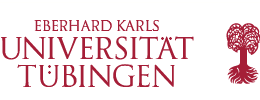Institutions
Links to Institutions
Bavaria's archive for Speech Signals (BAS), at the Institute for Phonetics and Speech Processing (IPS) at the Ludwig-Maximilians-University, Munich (LMU), has probably the largest collection of resources for spoken language (eg. corpora, language data bases) that are both used within science and industry, but at different prices and terms of use.
The Berlin-Brandenburg Academy of Science (BBAW) is an institution that is active in many areas, especially in the field of language resources, and presumably offers the most traditional lexicons for the German language such as the German Dictionary, also known as the Dictionary of Jacob and Wilhelm Grimm. The BBAW offers also other language resources, especially lexical ones.
At the Goethe University Frankfurt the Department of Humanitarian Informatics is established, a field that specializes in various humanitarian disciplines which comprise the application of diverse tools in Informatics.
The Institute for German Language (IDS) in Mannheim represents an institution of the Leibniz Scientific Community that examines the German language. During its existence plenty of resources and tools have already been developed. With COSMAS II it provides the German speakers with a system for searching in a corpus as well as analyzing its content.
For a long time now the Institute for Natural Language Processing (IMS) and the associated Collaborative Research Center 732: Incremental Specification in Context at the University of Stuttgart deal with automatic speech processing. Various tools and corpora were designed there. These were preserved and further developed for years, such as the Tree Tagger.
At the Max Planck Institute for Psycholinguistics (MPI) in Nijmegen, a whole set of language resources from many parts of the world is being collected, archived and preserved. These resources form the basis of extensive projects not only conducted at the institute, but also within other projects, as, for instance, the Documentation of Languages threatened of Extinction (DOBES) and a variety of software tools, that are used in the process of language documentation and language resources archiving.
The Collaborative Research Centre 673: Alignment in Communication at the (University of Bielefeld) deals with various aspects of alignment in communication. It is an interdisciplinary topic, as it requires cooperation among people specializing in the field of Informatics, Robotics and Linguistics who develop resources in various projects, such as for the purpose of Human-Machine-Communication.
The Collaborative Research Centre 538: Multilingualism (at the University of Hamburg) concentrates its research interests on multilingual applications of language, language acquisition and language change. The main assumption made in all research projects is that all natural language skills are oriented towards multilingualism (cf. http://www.uni-hamburg.de/sfb538/projekte.html).
The Collaborative Research Center 632: Information Structure: The linguistic means for structuring utterances, sentences and texts represents a focal point in the research project conducted by the University of Potsdam and the Humboldt-University, Berlin (HU). The research is mainly focused on the topic of information structure in different areas of Linguistics (cf. http://www.sfb632.uni-potsdam.de/main3322.html). The project comprises the following disciplines in Linguistics: German Studies, African Studies and Psychology.
At the Collaborative Research Centre 833: The Construction of Meaning: Dynamics and Adaptivity of Linguistic Structures (University of Tuebingen) scientists specializing in different fields (Linguistics, Computational Linguistics, Cognitive Science, Psychology, Neuroscience) work together on the problem regarding the emergence of meaning focusing on its development in context, during speech processing and under specific conditions of a particular grammar.



